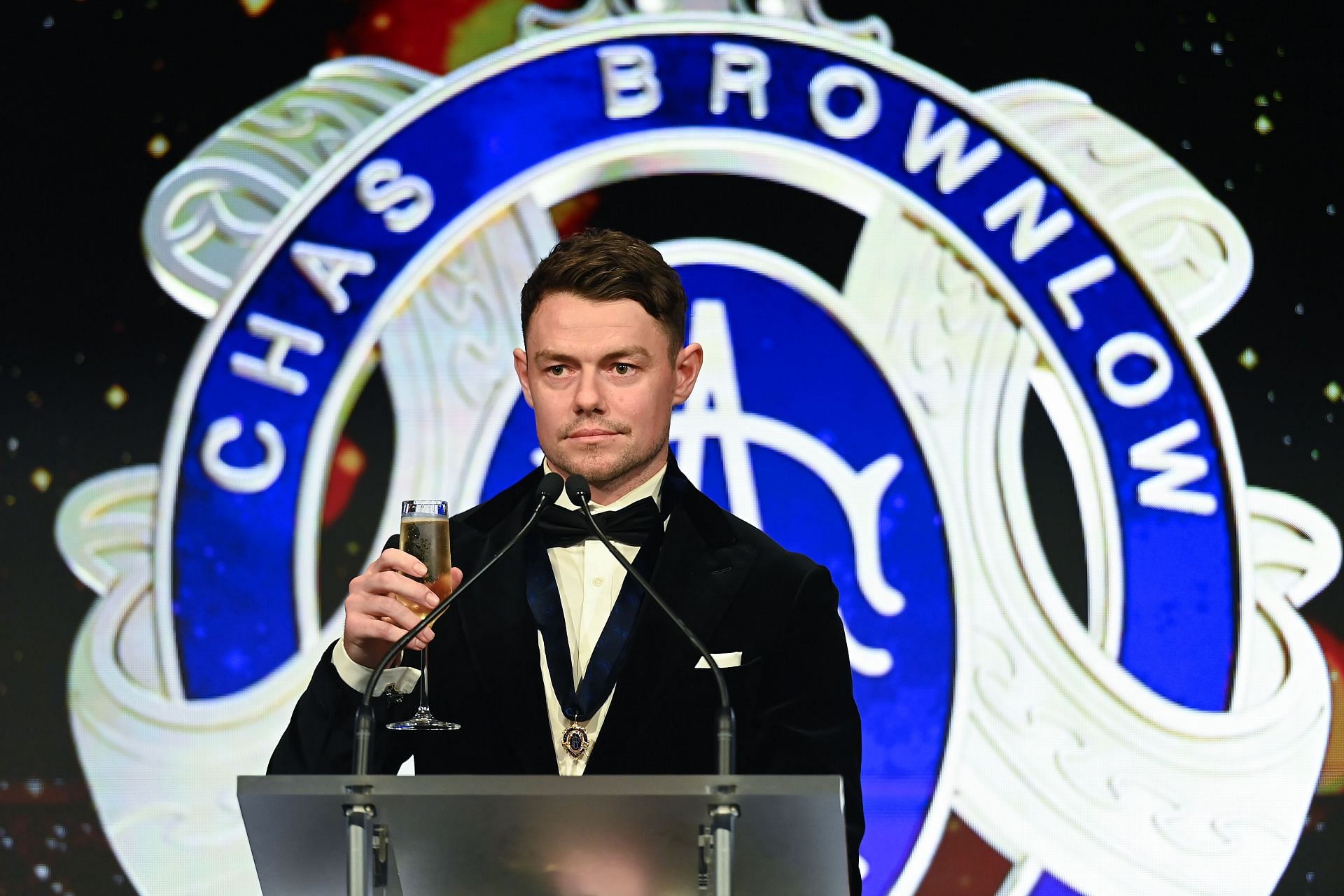
Top 5 players with the most Brownlow Medals in AFL history ft. Lachie Neale
The AFL award for best and fairest during the home and away season is called the Charles Brownlow Trophy and is popularly known as the Brownlow. It is widely accepted as the highest individual honour a player can receive at all levels of the AFL. It is determined by accumulating votes cast by the four officiating field umpires after each game.
It was first awarded in 1924 in honour of Geelong’s legendary player, Charles Brownlow, who was also club's secretary and the VFL president.
The award emphasizes fair play and sportsmanship. Players who are suspended by the AFL tribunal during the home and away season are ineligible to receive it even if they have the most votes. Conduct of players in previous seasons and finals are not considered.
This article lists AFL Brownlow medalists who are legends of the game.
Top 5 players with the most Brownlow Medals in AFL history ft. Lachie Neale
#5 Ivor Warne-Smith of Melbourne: 1926 and 1928
#5 Bill Hutchison of Essendon: 1952 and 1953
#5 Roy Wright of Richmond: 1952 and 1954
#5 Keith Greig of North Melbourne: 1973 and 1974
#5 Peter Moore of Collingwood / Melbourne: 1979 and 1984
#5 Greg Williams of Sydney / Carlton Blues: 1986 and 1994
#5 Robert Harvey of St Kilda: 1997 and 1998
#5 Adam Goodes of Sydney: 2003 and 2006
#5 Chris Judd of West Coast / Carlton: 2004 and 2010
#5 Gary Ablett Jr. of Geelong / Gold Coast: 2009 and 2013
#5 Nat Fyfe of Fremantle: 2015 and 2019
#5 Lachie Neale of Brisbane Lions: 2020 and 2023
#1 Ian Stewart
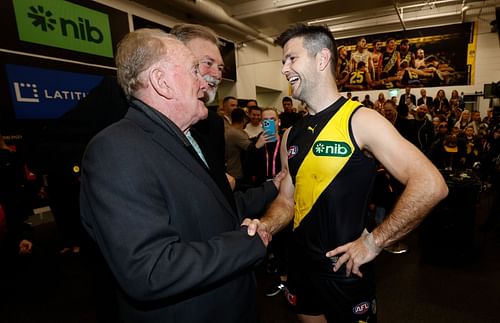
Stewart won his three Brownlows with two different clubs and remains the only AFL player to do so. He started his VFL career at St Kilda in 1963. He started as a forward but was subsequently moved to the centre when coach Allan Jeans realized he had excellent balance, was a prolific ball winner and user of the ball when he had it.
In 1965, he won his first Brownlow and did it again the next year with 21 votes. He was also selected for the All-Australian team in 1966 as the Saints won the only flag in their history.
He struggled with injuries and made it clear he wanted to leave the club in 1970. He was one of the first high profile trade in AFL trade history. He was traded for Richmond’s Billy Barrot in what he - Stewart - called a “sting deal.”
He won his third Brownlow in the 1971 season with three more votes than the runner-ups. He won another premiership with Richmond in 1973.
He retired from professional footy in 1975. He was one of the first players to be inducted into the Australian Football Hall of Fame in 1996 and he was elevated to Legend status in 1997.
#1 Bob Skilton
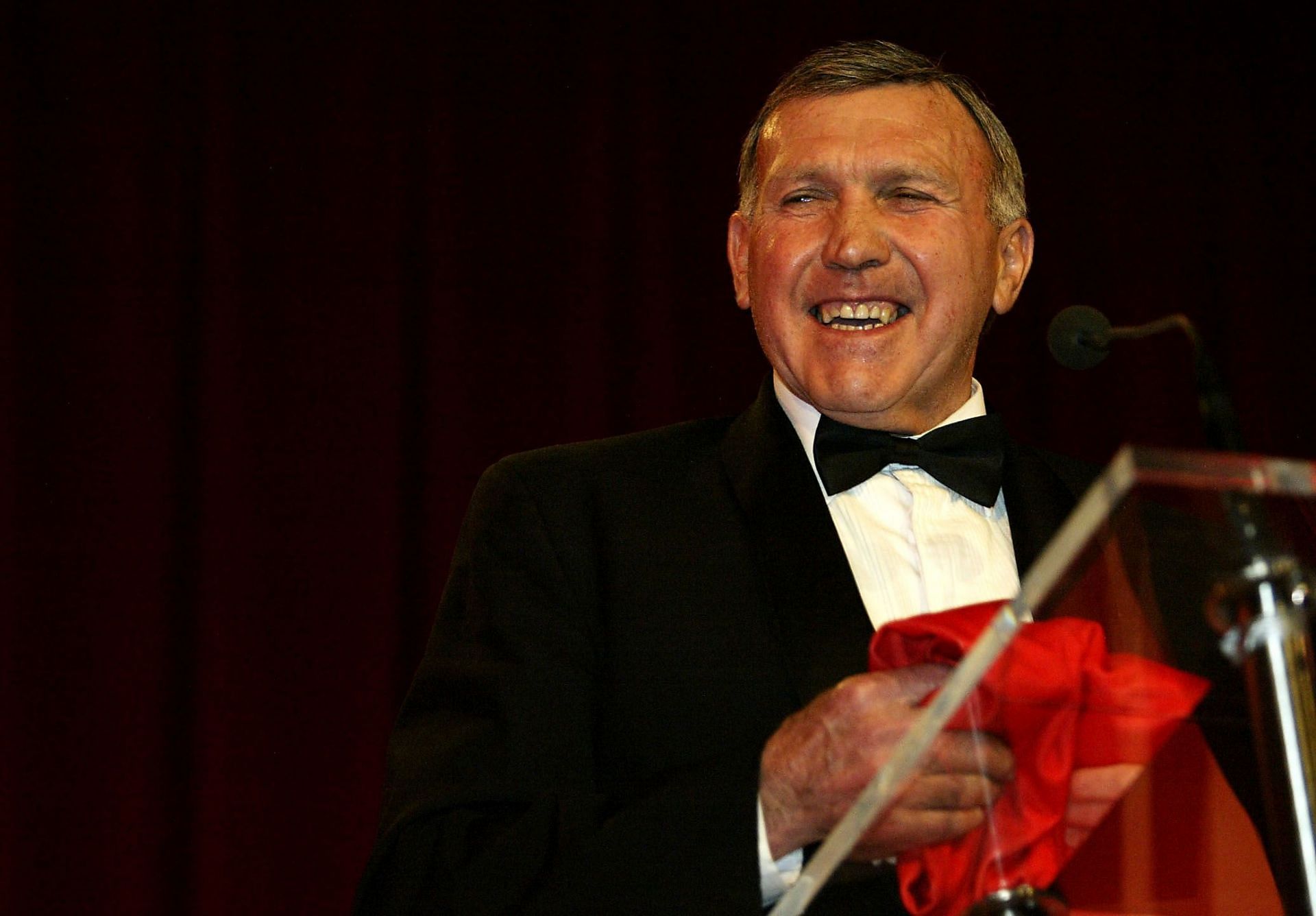
Skilton played for South Melbourne (now Sydney) between 1956-1971. He played as a ruck and was especially known for his ambipedal kicking ability, speed and ability to evade opposition players when necessary. He suffered many injuries, including a concussion, a broken nose four times, a broken wrist three times and 12 black eyes.
He won his Brownlows in 1959 (he tied with Verdun Howell), 1963 and 1968.
He missed the entire 1969 VFL season after a snapped achilles tendon in a pre-season practice match against Port Adelaide.
He retired in 1971 and was inducted into the Sport Australia Hall Fame in 1985. He was upgraded to Legend status in 2023.
#1 Dick Reynolds
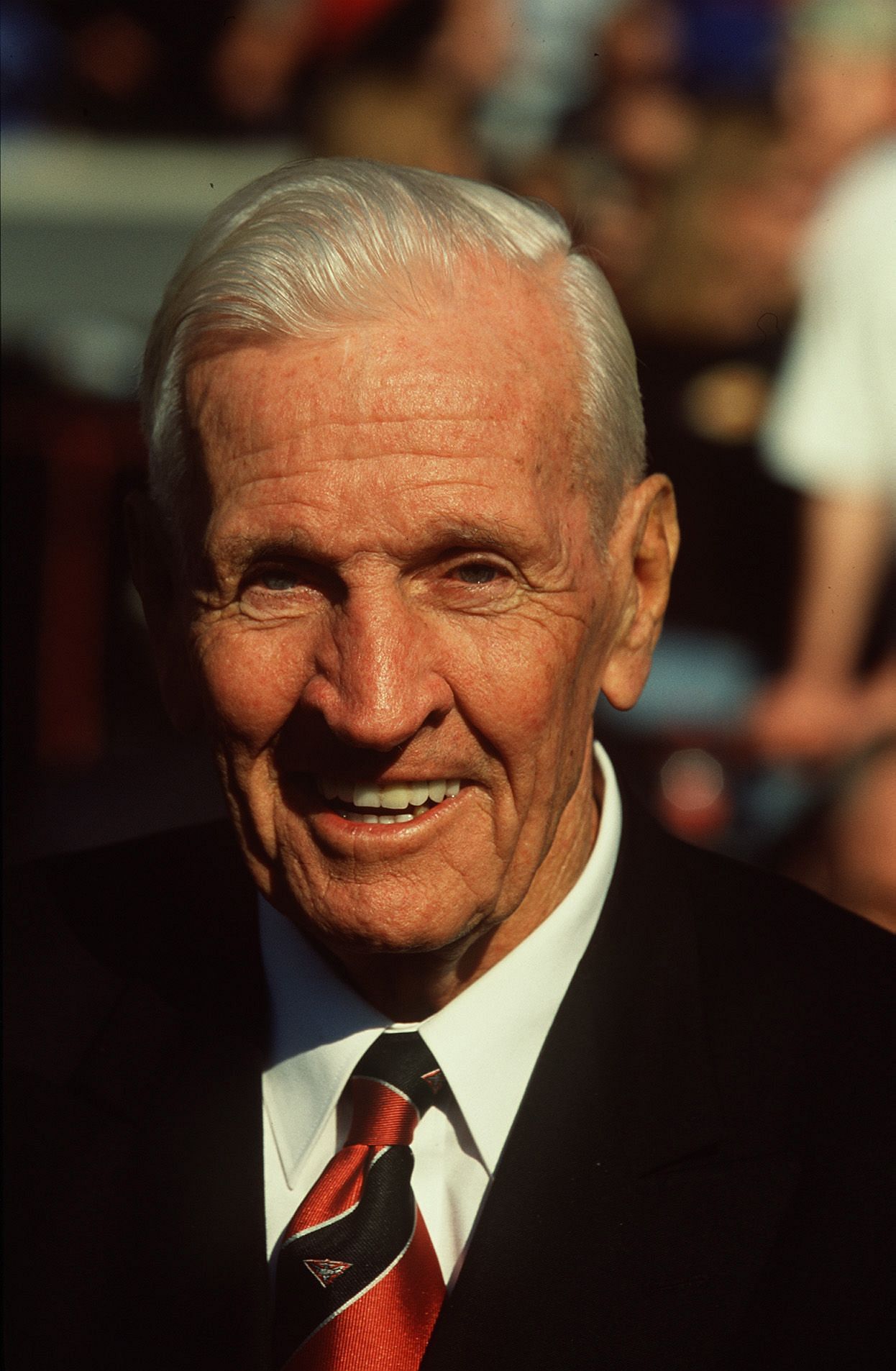
Reynolds played for Essendon throughout his professional career. He played as a midfielder and small forward. He won his first Brownlow in 1934. He won two more back to back in 1937 and 1938. He was a four time premiership player before he retired in 1951. He played 320 games and kicked 442 goals.
In 2002, he was ranked first by Essendon in their Champions of Essendon list. He died 2 September, 2002.
His family announced in 2017 that his three Brownlows were being auctioned.
#1 Haydn Bunton
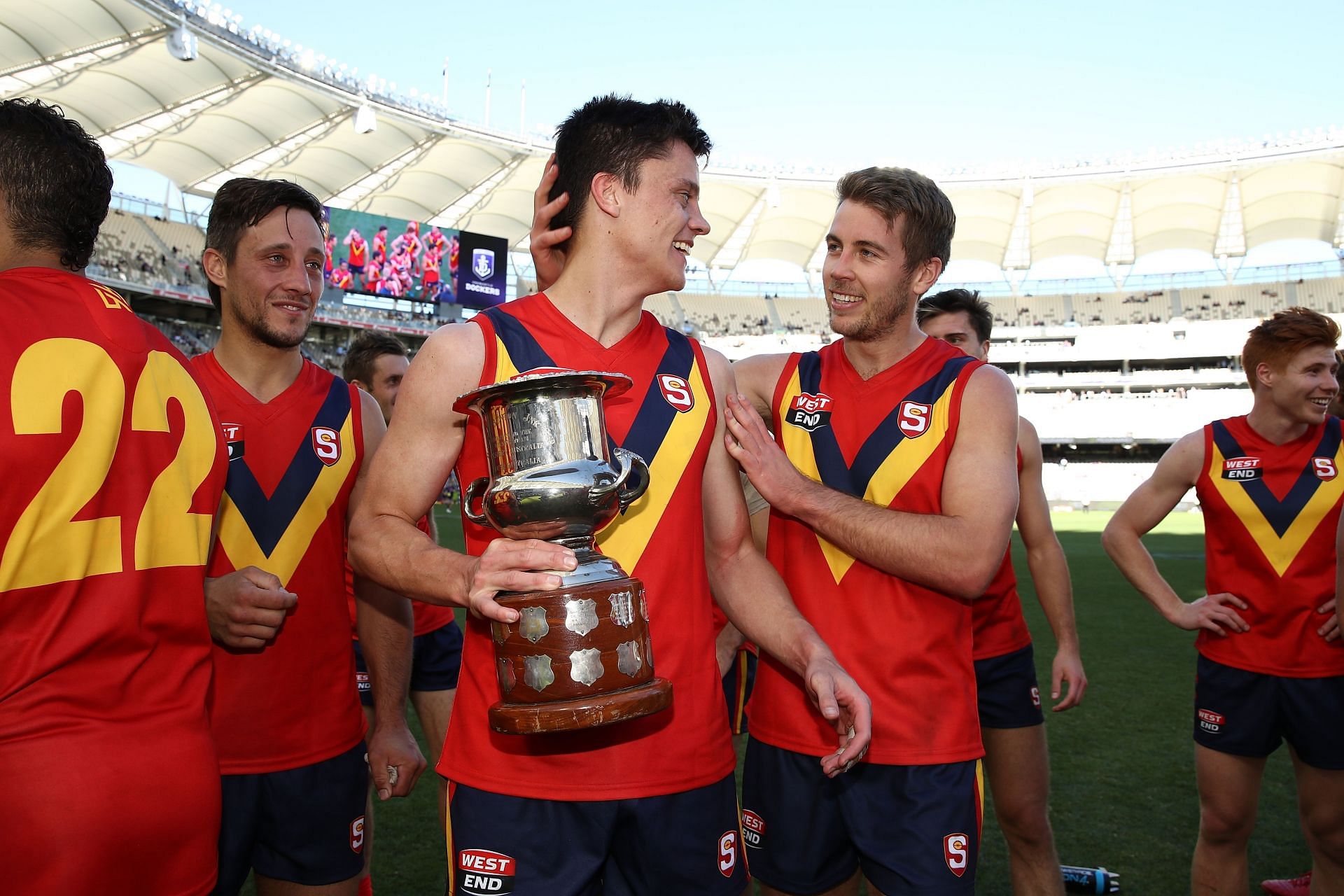
Bunton is the only footballer to have won the Brownlow Medal and the Sandover Medal three times each. He is also the only player to have an average of one Brownlow vote per game with 1.04.
He made his VFL debut for Fitzroy in round one of the 1931 season against Melbourne. He played as a rover and won two Brownlows in his first two years. He won five Fitzroy best-and-fairest awards in addition to his best and fairest awards. He was made captain in 1932.
He was runner-up for the Brownlow Medal in 1934 before winning his final one in 1935. He left Fitzroy in 1937 but returned in 1942. He only played two more games due to his army commitments.